-
 Bitcoin
Bitcoin $109,459.7682
2.44% -
 Ethereum
Ethereum $2,598.6052
6.29% -
 Tether USDt
Tether USDt $1.0003
0.00% -
 XRP
XRP $2.2734
3.95% -
 BNB
BNB $661.4886
1.58% -
 Solana
Solana $155.4825
4.35% -
 USDC
USDC $0.9999
-0.02% -
 TRON
TRON $0.2838
1.04% -
 Dogecoin
Dogecoin $0.1740
8.25% -
 Cardano
Cardano $0.6047
9.04% -
 Hyperliquid
Hyperliquid $40.2302
6.50% -
 Sui
Sui $2.9863
10.05% -
 Bitcoin Cash
Bitcoin Cash $509.5786
0.60% -
 Chainlink
Chainlink $13.8156
6.03% -
 UNUS SED LEO
UNUS SED LEO $9.0142
0.69% -
 Avalanche
Avalanche $19.0337
8.68% -
 Stellar
Stellar $0.2438
5.17% -
 Toncoin
Toncoin $2.9012
3.59% -
 Shiba Inu
Shiba Inu $0.0...01210
6.20% -
 Litecoin
Litecoin $90.0882
7.05% -
 Hedera
Hedera $0.1597
8.53% -
 Monero
Monero $326.3340
2.88% -
 Polkadot
Polkadot $3.6365
9.32% -
 Bitget Token
Bitget Token $4.6162
2.72% -
 Dai
Dai $1.0001
0.00% -
 Ethena USDe
Ethena USDe $1.0002
-0.01% -
 Uniswap
Uniswap $7.6403
10.47% -
 Pepe
Pepe $0.0...01060
12.03% -
 Aave
Aave $281.3664
7.56% -
 Pi
Pi $0.4992
1.76%
What is a subDAO?
A SubDAO is a specialized, autonomous entity under a larger DAO, enabling decentralized decision-making and resource management within specific projects or communities.
Jul 03, 2025 at 09:36 am
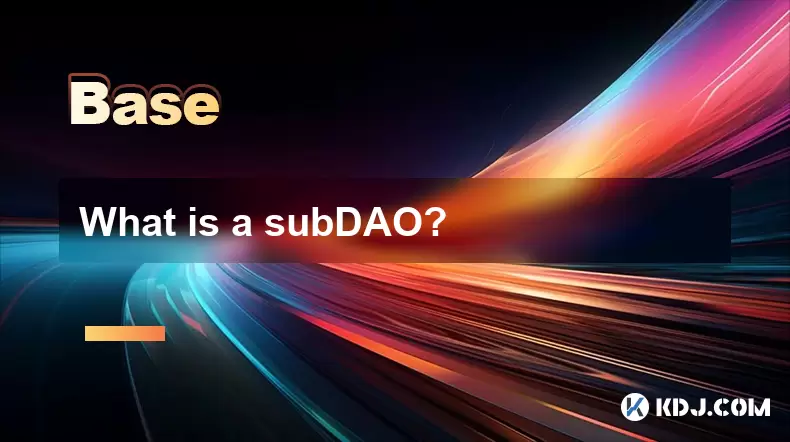
Understanding the Concept of SubDAO
A SubDAO, short for Sub-Decentralized Autonomous Organization, is a specialized entity that operates under the umbrella of a larger DAO (Decentralized Autonomous Organization). It functions with its own set of rules, governance mechanisms, and tokenomics while remaining aligned with the overarching goals of the parent DAO. This structure allows for greater specialization and decentralized decision-making within specific domains or projects.
Unlike traditional hierarchical organizations, where decisions are made by a central authority, a SubDAO enables community-driven initiatives to flourish without needing constant oversight from the main DAO. This modular approach enhances scalability and efficiency in managing decentralized projects.
How Does a SubDAO Function?
A SubDAO typically starts as a proposal within the main DAO. If approved through a voting process involving stakeholders, it can be spun off with defined parameters such as:
- Governance tokens: These may be newly minted or derived from the parent DAO’s token.
- Treasury allocation: A portion of the main DAO’s funds is allocated to support the SubDAO’s activities.
- Autonomous decision-making powers: The scope of what the SubDAO can decide independently is outlined during its creation.
Once operational, the SubDAO manages its own roadmap, budgets, and development priorities using on-chain governance tools like snapshot votes or on-chain proposals. Smart contracts enforce these rules to ensure transparency and immutability.
Use Cases of SubDAOs in the Crypto Ecosystem
SubDAOs have found relevance across various blockchain-based ecosystems. Some notable applications include:
- Project-specific funding: A game development team within a larger gaming-focused DAO can create a SubDAO to manage its budget and feature development independently.
- Regional communities: Global DAOs often use SubDAOs to represent different geographic regions, enabling localized decision-making and cultural adaptation.
- Vertical specialization: For example, a DeFi DAO might establish a SubDAO focused solely on yield farming strategies or risk management protocols.
These examples highlight how SubDAOs enable granular control and focus in areas that require deep domain expertise without disrupting the broader organizational structure.
Governance Mechanisms in a SubDAO
The governance model of a SubDAO can vary significantly based on design choices made during its formation. Some common structures include:
- Token-weighted voting: Holders of the SubDAO’s native token vote on proposals, with influence proportional to their holdings.
- Reputation-based systems: Contributions to the ecosystem earn reputation points that grant voting power.
- Hybrid models: Combining token ownership with active participation metrics to prevent plutocracy.
Smart contract platforms like Aragon or Colony provide frameworks for setting up these governance layers. Proposals are submitted, discussed, and voted on via decentralized forums and executed automatically once consensus is reached.
Challenges and Risks Associated with SubDAOs
Despite their benefits, SubDAOs introduce certain complexities and risks that must be carefully managed:
- Coordination overhead: Ensuring alignment between multiple SubDAOs and the parent organization requires robust communication channels.
- Funding fragmentation: Over-spawning SubDAOs can dilute resources and reduce the effectiveness of the core treasury.
- Security vulnerabilities: Each new SubDAO adds another attack surface; hence, thorough audits and secure coding practices are essential.
Moreover, legal uncertainties surrounding decentralized entities mean that SubDAOs must consider regulatory implications depending on their jurisdiction and operational nature.
Creating a SubDAO: A Step-by-Step Guide
If you're considering launching a SubDAO, follow this detailed guide:
- Define the purpose and scope: Clearly articulate what the SubDAO aims to achieve and how it aligns with the parent DAO’s mission.
- Draft a constitution or charter: Outline governance rules, token distribution, roles, and responsibilities.
- Secure approval from the main DAO: Submit your proposal for review and voting using the existing governance platform.
- Set up the treasury: Allocate funds and configure wallet permissions for multi-signature or timelock contract usage.
- Deploy governance infrastructure: Choose and integrate tools like Snapshot for off-chain voting or Gnosis Safe for treasury management.
- Launch communication channels: Establish Discord, Telegram, or forum spaces dedicated to the SubDAO’s discussions and updates.
- Begin operations: Start executing tasks, submitting internal proposals, and engaging contributors.
Each step should be documented transparently to build trust among participants and ensure accountability.
Frequently Asked Questions About SubDAOs
Q: Can a SubDAO operate completely independently from the main DAO?
A: While a SubDAO has autonomy in decision-making, it still adheres to overarching principles and smart contract constraints imposed by the parent DAO. Complete independence would make it a separate DAO altogether.
Q: How are disputes resolved within a SubDAO?
A: Dispute resolution usually follows predefined governance procedures, which may include arbitration modules, mediation councils, or escalation paths back to the main DAO if necessary.
Q: Are there any well-known examples of SubDAOs in action?
A: Yes, MetaCartel Ventures started as a SubDAO of MetaCartel before evolving into an independent entity. Similarly, Friends With Benefits (FWB) explored SubDAO structures for event planning and content creation.
Q: Can anyone propose the creation of a SubDAO?
A: Typically, any member of the parent DAO can submit a proposal, but it must pass through the standard governance voting process to gain legitimacy and funding.
Disclaimer:info@kdj.com
The information provided is not trading advice. kdj.com does not assume any responsibility for any investments made based on the information provided in this article. Cryptocurrencies are highly volatile and it is highly recommended that you invest with caution after thorough research!
If you believe that the content used on this website infringes your copyright, please contact us immediately (info@kdj.com) and we will delete it promptly.
- Altcoin Alert: Binance Listings and the Wild West of Crypto
- 2025-07-03 14:30:11
- Decentralized Stablecoins in 2025: Challenging Centralized Counterparts?
- 2025-07-03 14:30:11
- Meme Coin Mania: Is BTC Bull the Next Big Thing in a Limited Time BTC Bull Run?
- 2025-07-03 12:30:11
- Bitcoin Soars to $109,000: What's Fueling the Crypto Rally?
- 2025-07-03 10:30:13
- Hong Kong: Racing to Be the World's Tokenization Hub
- 2025-07-03 14:50:11
- Splatterhouse Rocks Retro Scene: A UK Magazine Deep Dive
- 2025-07-03 12:30:11
Related knowledge

What is open interest in derivatives?
Jul 03,2025 at 02:49pm
Understanding Open Interest in DerivativesOpen interest is a critical metric used in the cryptocurrency derivatives market, particularly when analyzing futures and options contracts. It represents the total number of outstanding contracts that have not been settled or closed by either party involved. Unlike trading volume, which counts all trades made i...
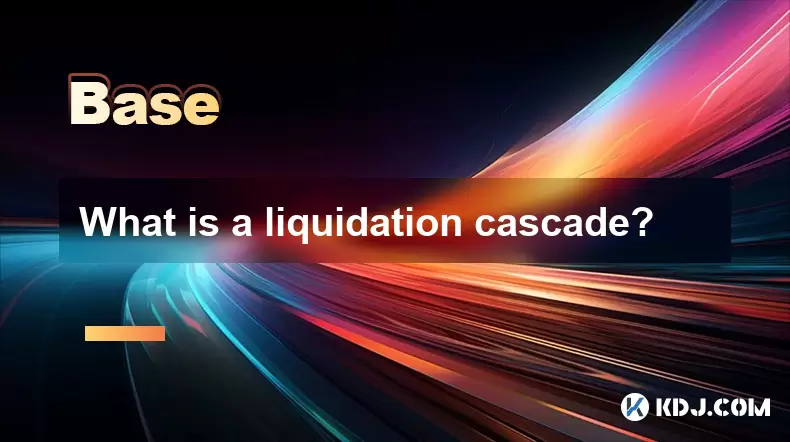
What is a liquidation cascade?
Jul 03,2025 at 07:15am
Understanding the Concept of LiquidationIn the realm of cryptocurrency trading, liquidation refers to the process by which a trader's position is automatically closed due to insufficient funds to maintain the leveraged trade. This typically occurs when the market moves against the trader's position and their account equity falls below the required maint...
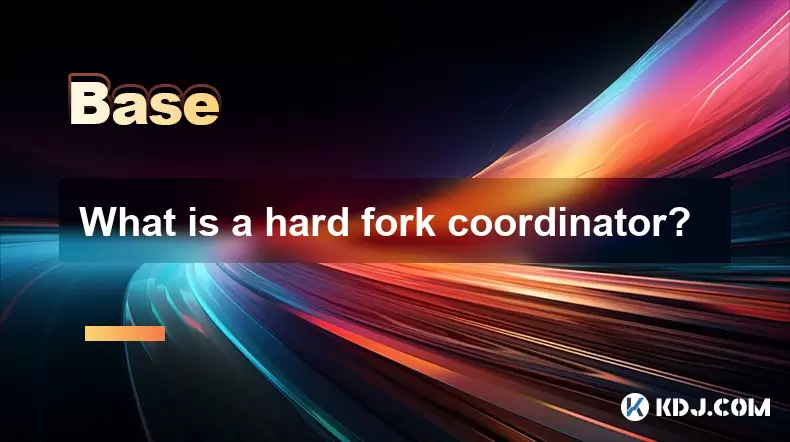
What is a hard fork coordinator?
Jul 03,2025 at 12:42pm
Understanding the Role of a Hard Fork CoordinatorIn the world of blockchain and cryptocurrencies, a hard fork coordinator plays a critical role during major network upgrades. A hard fork is a significant change to a blockchain’s protocol that makes previously invalid blocks or transactions valid (or vice versa). This type of upgrade requires all nodes o...
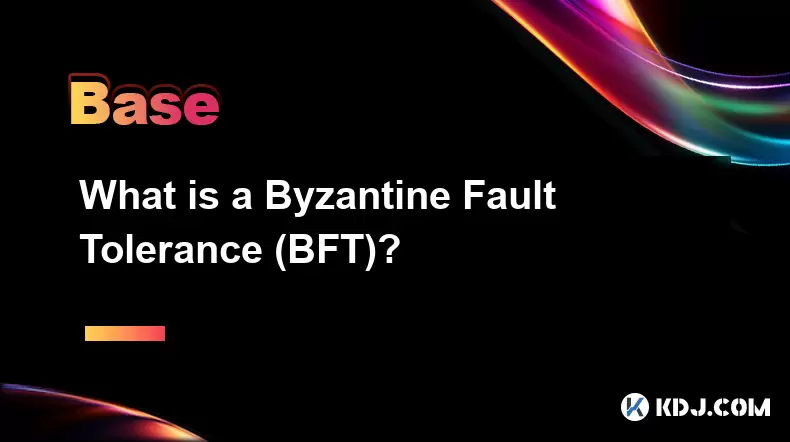
What is a Byzantine Fault Tolerance (BFT)?
Jul 03,2025 at 11:49am
Understanding the Concept of Byzantine Fault ToleranceByzantine Fault Tolerance (BFT) is a critical concept in distributed systems, particularly within the realm of blockchain technology and cryptocurrencies. It refers to the ability of a system to continue functioning correctly even when some components fail or behave maliciously. The term originates f...

What is a subDAO?
Jul 03,2025 at 09:36am
Understanding the Concept of SubDAOA SubDAO, short for Sub-Decentralized Autonomous Organization, is a specialized entity that operates under the umbrella of a larger DAO (Decentralized Autonomous Organization). It functions with its own set of rules, governance mechanisms, and tokenomics while remaining aligned with the overarching goals of the parent ...
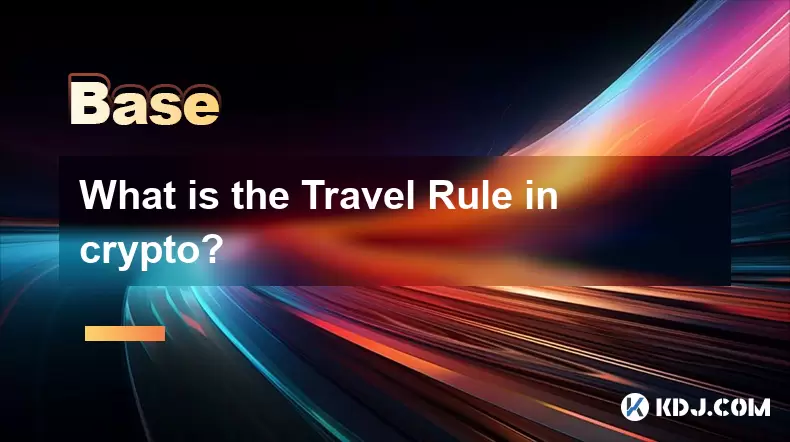
What is the Travel Rule in crypto?
Jul 03,2025 at 10:28am
Understanding the Travel Rule in CryptocurrencyThe Travel Rule is a regulatory requirement initially introduced by the Financial Action Task Force (FATF) for traditional financial institutions. It has since been extended to cryptocurrency transactions, especially those involving Virtual Asset Service Providers (VASPs). The core purpose of this rule is t...

What is open interest in derivatives?
Jul 03,2025 at 02:49pm
Understanding Open Interest in DerivativesOpen interest is a critical metric used in the cryptocurrency derivatives market, particularly when analyzing futures and options contracts. It represents the total number of outstanding contracts that have not been settled or closed by either party involved. Unlike trading volume, which counts all trades made i...

What is a liquidation cascade?
Jul 03,2025 at 07:15am
Understanding the Concept of LiquidationIn the realm of cryptocurrency trading, liquidation refers to the process by which a trader's position is automatically closed due to insufficient funds to maintain the leveraged trade. This typically occurs when the market moves against the trader's position and their account equity falls below the required maint...

What is a hard fork coordinator?
Jul 03,2025 at 12:42pm
Understanding the Role of a Hard Fork CoordinatorIn the world of blockchain and cryptocurrencies, a hard fork coordinator plays a critical role during major network upgrades. A hard fork is a significant change to a blockchain’s protocol that makes previously invalid blocks or transactions valid (or vice versa). This type of upgrade requires all nodes o...

What is a Byzantine Fault Tolerance (BFT)?
Jul 03,2025 at 11:49am
Understanding the Concept of Byzantine Fault ToleranceByzantine Fault Tolerance (BFT) is a critical concept in distributed systems, particularly within the realm of blockchain technology and cryptocurrencies. It refers to the ability of a system to continue functioning correctly even when some components fail or behave maliciously. The term originates f...

What is a subDAO?
Jul 03,2025 at 09:36am
Understanding the Concept of SubDAOA SubDAO, short for Sub-Decentralized Autonomous Organization, is a specialized entity that operates under the umbrella of a larger DAO (Decentralized Autonomous Organization). It functions with its own set of rules, governance mechanisms, and tokenomics while remaining aligned with the overarching goals of the parent ...

What is the Travel Rule in crypto?
Jul 03,2025 at 10:28am
Understanding the Travel Rule in CryptocurrencyThe Travel Rule is a regulatory requirement initially introduced by the Financial Action Task Force (FATF) for traditional financial institutions. It has since been extended to cryptocurrency transactions, especially those involving Virtual Asset Service Providers (VASPs). The core purpose of this rule is t...
See all articles

























































































